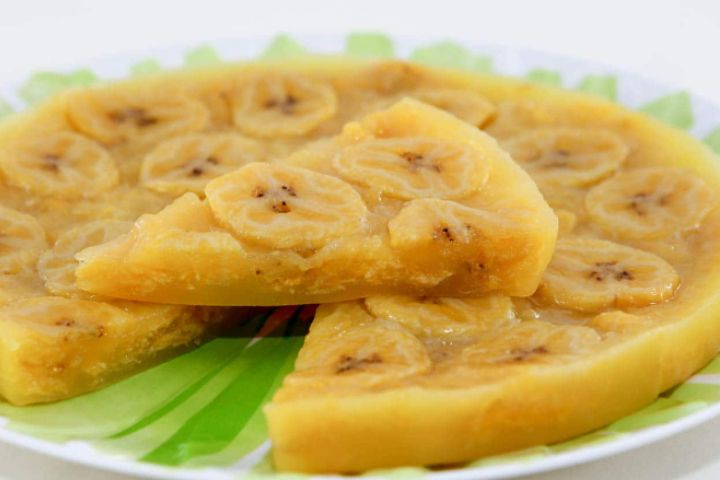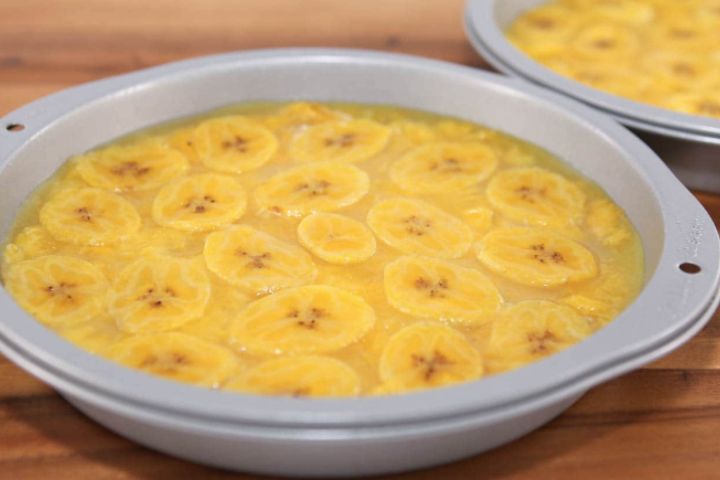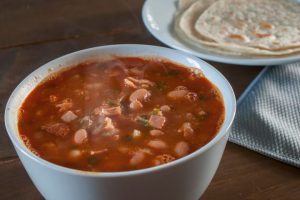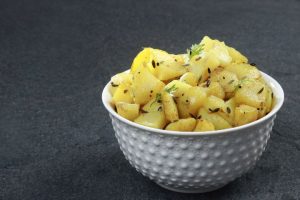Delicious Banh Chuoi Hap Recipe
Introduction
Contents
- Introduction
- Ingredients
- Preparing the bananas
- Assembly
- Adding optionally available fillings
- Steaming
- Steaming the Banh Chuoi Hap Recipe
- Serving and presentation
- Plating and garnishing
- Variations and Adaptations
- Vegan or gluten-unfastened options
- Tips and Troubleshooting
- Troubleshooting common problems
- Conclusion
- Frequently Asked Questions (FAQs)
A brief review of Banh Chuoi Hap Recipe
Learn how to make a delicious Banh Chuoi Hap with this recipe. Banh Chuoi Hap, also referred to as steamed banana cake, is a conventional Vietnamese dessert that showcases the proper marriage of ripe bananas, sticky rice flour, and coconut milk. This delightful candy is wrapped in banana leaves or parchment paper and steamed to create a tender and aromatic delicacy.

Historical past and cultural significance
Banh Chuoi Hap holds a special place in Vietnamese culinary subculture, with its origins dating back to the United States’ wealthy records. The method of steaming substances on banana leaves or parchment paper has been used in Vietnamese cooking for centuries. Banh Chuoi Hap represents the creativity and resourcefulness of Vietnamese delicacies and the use of easy substances to create a memorable dessert.
Ingredients
Main ingredients
Ripe bananas
Ripe bananas are essential for Banh Chuoi Hap, as they provide natural sweetness and a creamy texture to the cake. Opt for bananas with golden peels that are slightly soft to the touch.
Sticky rice flour
Sticky rice flour, additionally called glutinous rice flour, covers the bottom of the cake and gives it its chewy texture. It is conveniently available in Asian grocery shops or can be made by grinding glutinous rice.
Coconut milk
Coconut milk provides richness and a diffused tropical taste to Banh Chuoi Hap. Choose amazing coconut milk for its quality effects, either canned or freshly squeezed.
Preparing the bananas
Choosing ripe bananas
Select bananas that are fully ripe with a golden hue and a mild softness when gently pressed. Ripe bananas provide a sweeter and more flavorful taste.
Peeling and slicing bananas
Peel the ripe bananas and slice them into thin, even portions. This will ensure an even distribution of the banana slices in the cake.
Preparing the sticky rice flour mixture
Combining sticky rice flour and coconut milk
In a blending bowl, combine the sticky rice flour and coconut milk, steadily incorporating the liquid into the flour. Stir until an easy and thick batter is formed.
Achieving the right consistency
Adjust the consistency of the batter by adding more coconut milk or sticky rice flour as desired. The batter has to have a barely thick and pourable consistency, just like pancake batter.
Assembly
Wrapping the banana slices
Creating a pocket for the filling
Place a banana leaf or parchment paper on a flat floor. Spoon a small quantity of the sticky rice flour batter onto the leaf and spread it into a thin layer. Arrange a few banana slices on the pinnacle, and spoon every other layer of batter to cover the bananas. Fold the leaf or paper to enclose the filling, creating a pocket.
Adding optionally available fillings
Spooning mung bean paste
To upload a pleasing filling, spoon a small quantity of mung bean paste onto the banana slices before masking them with the sticky rice flour batter.
Sprinkling shredded coconut or sesame seeds
For extra taste and texture, sprinkle shredded coconut or sesame seeds on top of the batter before folding the banana leaf or parchment paper.
Steaming
Setting up the steamer
Using a conventional steamer or an improvised setup
Place the wrapped Banh Chuoi Hap in a steamer basket covered with banana leaves or parchment paper. If a conventional steamer is not available, a makeshift setup using a massive pot with a steaming rack or a bamboo steamer can be used.
Steaming the Banh Chuoi Hap Recipe
Cooking time and temperature
Steam the Banh Chuoi Hap over medium-high heat for approximately 30–40 minutes. The precise cooking time may additionally vary depending on the thickness of the cake and the intensity of the steam.

Checking for doneness
To check if the cake is cooked, insert a toothpick into the middle. If it comes out easily or with a few moist crumbs, the Banh Chuoi Hap is ready.
Serving and presentation
Cooling and unwrapping
Allowing Banh Chuoi Hap to chill
Once the steaming is complete, remove the Banh Chuoi Hap from the steamer and allow it to cool for a few minutes. Cooling enables the cake to set and makes it less complicated to address.
Unwrapping and revealing the sensitive texture
Carefully unwrap the banana leaves or parchment paper to expose the superbly steamed Banh Chuoi Hap. The cake needs to have a gentle, slightly sticky texture.
Plating and garnishing
Arranging Banh Chuoi Hap attractively
Place the Banh Chuoi Hap on a serving plate and set it up in an appealing manner. Consider stacking the man or woman cakes or arranging them in a round pattern.
Adding extra garnishes (e.g., mint leaves)
Enhance the presentation by garnishing with mint leaves or other clean herbs. These garnishes now not only add visible attraction but additionally offer a fresh aroma.
Variations and Adaptations
Regional variations
Differences in elements and fillings
Depending on the location in Vietnam, Banh Chuoi Hap may additionally feature precise versions of substances and fillings. Some variations might also include an additional end result or use alternative sweeteners.
Vegan or gluten-unfastened options
Substituting elements for nutritional options
For those with dietary restrictions, Banh Chuoi Hap may be easily tailored. Replace traditional ingredients like sticky rice flour with gluten-free alternatives and use plant-based milk as opposed to coconut milk.
Tips and Troubleshooting
Tips for success
Using ripe bananas for better flavor
Ripe bananas provide a sweeter and more extreme flavor, which contributes to the general flavor of Banh Chuoi Hap. Aim for bananas with a golden peel and a tender texture.
Properly sealing the pockets to prevent leakage
Ensure that the banana leaf or parchment paper is securely folded to create a nicely sealed pocket. This will prevent any filling from leaking at some point in the steaming system.
Troubleshooting common problems
Sticky rice flour mixture too thick or skinny
If the batter is simply too thick, add a small quantity of coconut milk to achieve a pourable consistency. Conversely, if the batter is just too thin, use more sticky rice flour until the desired thickness is reached.
Banh Chuoi Hap falling apart at some point of steaming
To prevent the desserts from falling aside, make certain the banana slices are frivolously distributed within the batter and the filling is adequately enclosed within the pocket. Additionally, avoid overcrowding the steamer, as it could cause choppy cooking and breakage.
Conclusion
A recap of the Banh Chuoi Hap recipe
Banh Chuoi Hap, or steamed banana cake, is a delightful Vietnamese dessert that highlights the flavors of ripe bananas, sticky rice flour, and coconut milk. It is a true testament to Vietnamese culinary ingenuity and resourcefulness.
Appreciating the precise flavors and textures
The combination of sweet, creamy bananas and the chewy texture of sticky rice flour creates a fantastic flavor experience. In addition, the diffused fragrance from the banana leaves or parchment paper enhances the overall sensory satisfaction.
Encouragement to attempt making Banh Chuoi Hap at home
Embark on a culinary adventure by making Banh Chuoi Hap in your very own kitchen. With its easy yet terrific flavors, this conventional Vietnamese dessert is sure to impress your family and friends. Enjoy the method of making this delectable deal and take pleasure in the scrumptious results.
Frequently Asked Questions (FAQs)
Can I use regular rice flour in preference to sticky rice flour?
Sticky rice flour is important for accomplishing the preferred texture of Banh Chuoi Hap. Regular rice flour will not provide the same chewiness. However, if you can’t discover sticky rice flour, you can try using a mixture of normal rice flour and tapioca starch to get a comparable effect.
Can I use frozen bananas for Banh Chuoi Hap?
While fresh, ripe bananas are recommended for their pleasant flavor, you could also use frozen bananas. Thaw them completely before slicing and incorporating them into the recipe.
Can I steam Banh Chuoi Hap without banana leaves or parchment paper?
Banana leaves or parchment paper help to keep the cake together and impart a completely unique aroma. However, if you do not have access to them, you could use silicone cupcake liners or small heat-resistant bowls greased with oil as alternative steam packing containers.
How long can I save Banh Chuoi Hap Recipe ?
Banh Chuoi Hap is pleasant and clean on the day it is made. However, you may keep any leftovers in an airtight container in the fridge for up to two days. Reheat gently in a steamer before serving.
Can I freeze Banh Chuoi Hap?
It isn’t recommended to freeze Banh Chuoi Hap, as it can affect the feel and flavor of the cake. It is fine to consume it clean for the ideal taste.
Can I customize the fillings in Banh Chuoi Hap?
Absolutely! While mung bean paste, shredded coconut, and sesame seeds are not unusual fillings, you could get innovative and experiment with distinct fillings such as chocolate chips, nuts, or maybe clean fruits like mango or pineapple.
Is Banh Chuoi Hap gluten-free?
Banh Chuoi Hap may be made gluten-free by using gluten-free sticky rice flour and ensuring that every other substance used is also gluten-free. Double-check the labels of the components to be sure.
Can I use other sorts of sweeteners in preference to coconut milk?
Coconut milk adds richness and taste to Banh Chuoi Hap Recipe. However, when you have nutritional regulations or options, you may discover the use of other plant-based milk options like almond milk or soy milk. Keep in mind that it could barely regulate the taste.
Can I steam Banh Chuoi Hap in a pressure cooker?
While it’s viable to steam Banh Chuoi Hap in a pressure cooker, the feel and cooking time can also vary. It is recommended to follow the precise commands for steaming in a stress cooker and alter as a consequence.
Can I serve Banh Chuoi Hap with any accompaniments?
Banh Chuoi Hap is scrumptious on its own, but you could decorate the dish by serving it with a drizzle of sweetened condensed milk, a scoop of coconut ice cream, or a sprinkle of toasted sesame seeds. Get innovative and explore distinct combos!






